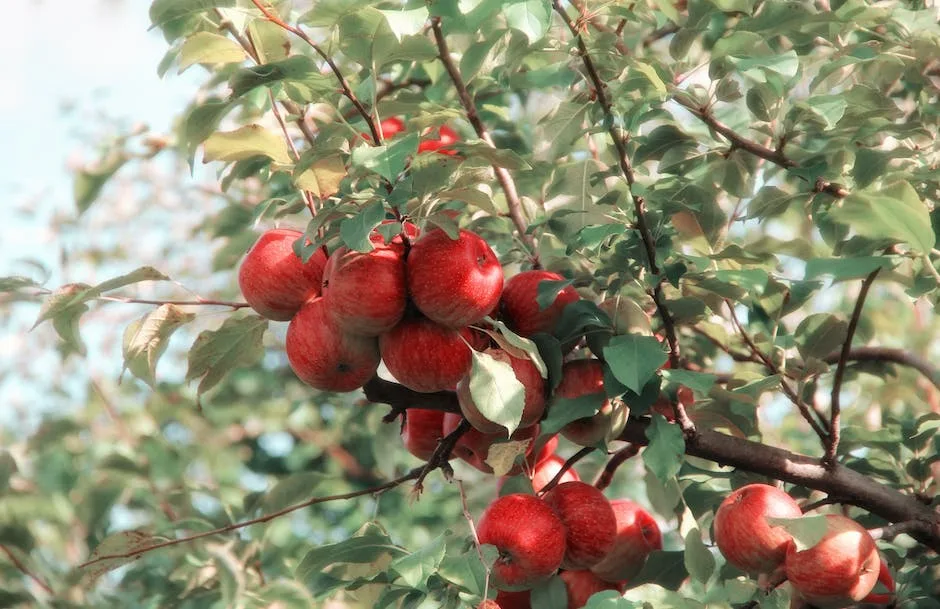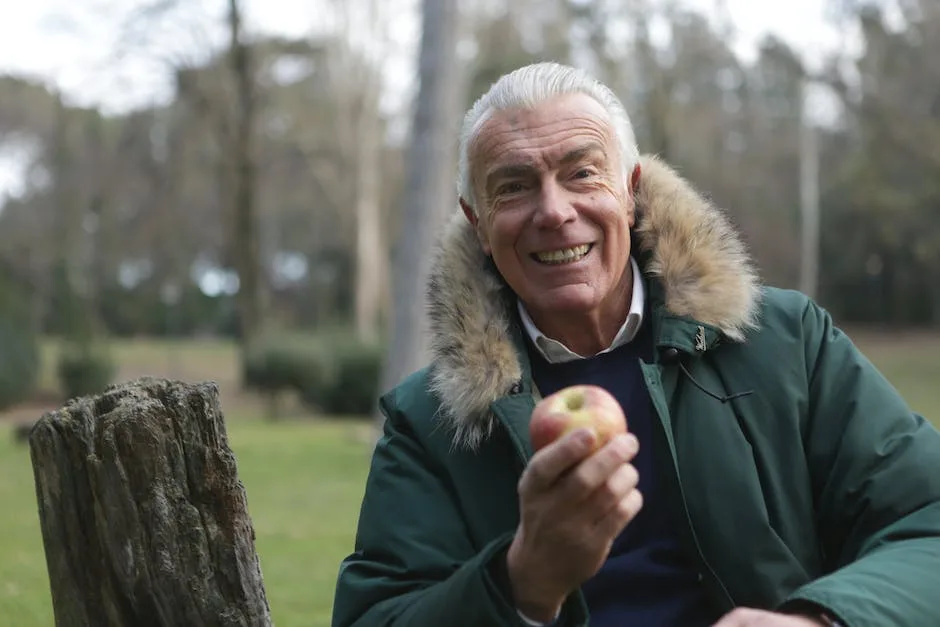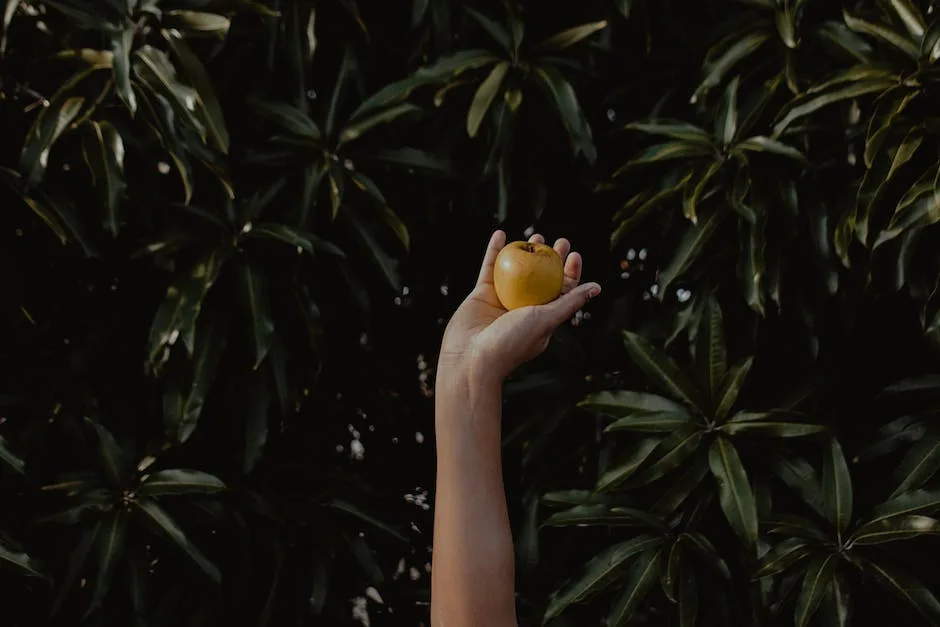When the weather starts to cool down and the leaves begin to change color, it’s time to start thinking about how to winterize your apple trees. By taking a few simple steps now, you can help your apple trees survive the cold weather and produce a bountiful crop next year.
1. Mulch your trees with at least 2-3 inches of organic matter like leaves, bark, or wood chips.
2. Wrap trees with burlap or another breathable material to protect them from harsh winds.
3. Don’t forget to water your trees throughout the winter!
4. Inspect your trees regularly for signs of damage or stress.
How do I prepare my apple tree for winter?
Apple trees need special care during winter to ensure that they remain healthy and produce a good yield of fruit the following year. Follow the tips above to help prepare your apple trees for winter and protect them from the cold weather.
If you are growing fruit trees in containers, you need to be aware of the temperature. Generally, you shouldn’t let the container fruit trees be exposed to temperatures below 20 degrees F. Colder temperatures will kill the roots of even large-container trees. Trees in small containers should be protected from temperatures below freezing.
How do you wrap a fruit tree for the winter
Trees need protection from the sun just like we do! By wrapping the trunk in kraft paper or placing white plastic tree guards around the base, you can reflect the harmful rays of the sun away from the tree. This will keep the tree cool and help it to stay healthy.
Fall is an important time to take care of your fruit trees. Water well once the leaves have fallen and rake up any fallen leaves. Refrain from fertilizing the trees at this time, and wait until spring for any major pruning. Control insects and don’t let fruit overripen on the tree. Take care to protect the branch spurs from damage, and protect trees from sunscald.
Should apple trees be covered for frost?
Most fruit trees are hardy during winter and don’t need to be covered up. However, early budding trees that bloom in early spring may need to be covered to avoid freezing the blossoms.
Potted trees are much more susceptible to damage from the cold than those that are planted in the ground. The roots of potted trees are much more exposed to the cold, and the pot itself can act as a conductor of the cold, causing the roots to freeze.
There are a few things you can do to protect your potted trees from the cold:
– Move them indoors or into a garage: If you have the space, the best way to protect your potted trees is to move them indoors or into a garage for the winter.
– Wrap the pot in bubble wrap: If you can’t move your potted trees indoors, you can try wrapping the pot in bubble wrap. This will help insulate the roots and protect them from the cold.
– Place the pot on a block of wood: Another way to insulate the roots of your potted tree is to place the pot on a block of wood. This will help to raise the pot off the ground and prevent the roots from coming into direct contact with the cold ground.
– Cover the pot with a cloth: Another option is to cover the pot with a cloth. This will help to trap in some warmth and protect the roots from the cold.
What do you feed apple trees in the winter?
Apples and young pear trees need a lot of potassium to produce fruit, so using a potassium-rich fertilizer is essential. You can either use a general fertilizer like Growmore, or a specific rose fertilizer. Whichever you choose, make sure to follow the manufacturer’s directions for application.
Apples are a type of fruit that can be frozen. The freezing point of apples is lower than 32°F. The freezing point of apples varies depending on the variety and the maturity of the fruit. Apples can be frozen at 285 to 28°F.
Do you prune apple trees in winter
Summer pruning of apples helps encourage fruiting and flowering, but winter pruning is essential for controlling their shape and vigor. Winter pruning commences, unsurprisingly, during the colder months. Don’t be tempted to prune too soon in the belief that doing so in warmer weather will be better for the tree.
One way to prepare fruit trees for winter is by mulching your tree with straw or wood chips. This extra layer of organic matter helps insulate your fruit tree’s roots, protecting them from freezing during the winter.
At what temp should I cover my fruit trees?
At 32 degrees Fahrenheit, it is time to cover your fruit trees. This will protect them from the cold and they will be able to thrive. Be sure to check the weather forecast so that you can plan accordingly.
Trees don’t need to be wrapped in the winter unless the weather is predicted to get close to freezing and threatens frost. Otherwise, most trees will be fine. Just keep an eye on the weather and make sure to cover your trees if necessary.
Can you cut an apple tree in October
The best time to prune a tree is while it is dormant, after it has lost its leaves and before it starts growing again. This is usually between November and early March.
Pome fruits are a type of fruit that includes apples, pears, and quinces. These fruits are typically round or oblong, and have a thick skin. Pome fruits are grown on trees, and are typically harvested in the fall.
Standard apple trees should be pruned when the tree is dormant in winter, ideally between November and early March. Trained apple trees, like espaliers and fans, should be pruned in summer.
Can I move an apple tree in October?
It’s best to transplant a tree when it’s fully dormant and has lost all its leaves. For apples, this is usually around December. An apple on the M26 rootstock is likely to get to a mature height of 25-3m, so allow for a spread of 3m or so.
A late freeze in spring can damage the blossoms or developing fruit on apples, cherries, and other fruit trees. As a result, the fruit crop may be smaller than normal. The extent of damage will be determined by the plant species, stage of flower/fruit development, and temperature.
Should I spray my fruit trees with water before a freeze
It is important to continue spraying water throughout a freeze event in order to prevent damage to the fruit. Once the ice begins to melt, the spray should continue until the tree is completely clear of any ice.
As part of your winter treatment for fruit trees, be sure to remove any dropped, rotting fruit as well as any remaining fruit on the trees. This will help to prevent insect pests from infesting the trees. You can also prevent or limit fruit tree diseases by correctly pruning the trees in winter.
How do I care for my outdoor fruit tree in the winter
If you have container trees, the best way to care for them during winter is to move them under cover and keep them at a low temperature, but slightly above freezing. This will prevent the trees from losing their leaves and ensure that they stay healthy until spring.
Most fruit trees do not need to be fertilized in the fall. If you do fertilize them, it is best to do it before July 1. Young trees should never be fertilized because it will make them take longer to mature and bear fruit.
What’s the best fertilizer for apple trees
Fertilizing fruit trees is important to ensure a good harvest, and using an organic, high nitrogen fertilizer is the best way to go. Blood meal, soybean meal, composted chicken manure, cottonseed meal, and feather meal are all good, organic nitrogen sources.
Spring is the perfect time to fertilize fruit trees because they need plenty of energy to grow new leaves and baby fruits. By fertilizing them in the spring, you can help them get the nutrients they need to thrive and produce a bountiful crop.
Are apples still good if they freeze
If you plan to use your apples for baking or applesauce, freezing them is a great way to keep them fresh for several months. Just be sure to prepare them properly first so they don’t taste dried-out or bitter when thawed. Keep in mind that frozen apples are best used in recipes because freezing changes their texture, making them unsuitable for eating raw.
If you have larger quantities of apples, it is best to look for a cool, dark, and relatively humid place to store them, such as a cellar or garage. The ideal temperature for storing apples is close to freezing but not below! Wrap each apple in a piece of newspaper or kraft paper, making sure to keep the apples separated from each other. The paper will help to keep the apples from bruising.
Final Words
In order to winterize apple trees, you’ll need to take some special precautions. First, you’ll need to water the trees well before the first frost. This will help them to withstand the cold temperatures. Next, you’ll need to add some extra insulation around the trees. This can be done by wrapping them in burlap or placing a small fence around them. Finally, you’ll need to prune the trees in late winter or early spring. This will help them to produce more fruit in the upcoming season.
Apple trees are a winter-hardy fruit tree, but there are a few things you can do to help them survive the coldest months. wrap the trunk in burlap or commercial tree wrap and mounded 6 to 8 inches of mulch around the base of the tree. Water the tree deeply before the ground freezes to help the roots absorb moisture. Add a layer of protection by hanging bird netting over the tree or covering it with a lightweight plastic sheet or tarp.
Jackson Hill is a passionate arborist with years of experience in the field of trees. He developed his fascination with trees at a young age, spending countless hours exploring the forests and climbing trees. Jackson went on to study arboriculture and horticulture at Michigan State University and later earned a degree in forestry from the University of Michigan.
With his extensive knowledge and expertise, Jackson has become a trusted authority on trees and their impact on the environment. His work has helped shape the field of arboriculture and he continues to be a leading voice in the industry.
